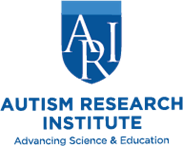The Finer Side of ABA: Teaching Social Communication Skills
Presented by John McEachin, PhD, BCBA-D at the Fall 2012 Autism Research Institute Conference
Applied Behavior Analysis provides a systematic framework for teaching a wide range of skills to children with Autism Spectrum Disorder (ASD). Although commonly regarded as a highly structured approach it is also is very adaptable and flexible and well-suited to teaching more advanced and subtle skills associated with social communication. The degree of structure depends on the learning style of the student and the complexity of the skill being taught. Examples will be provided of teaching the basic elements of language, breaking down abstract concepts into teachable components, and the social components of communication including joint attention.
Published: 12/05/2012

Nonverbal kids with autism may understand much more language than they produce
Nonverbal or minimally verbal children with autism spectrum disorders (ASD) may understand significantly more language than they are able to produce, according to a new study. Yanru Chen and colleagues analyzed
Delayed and Missed Diagnoses of Autistic Women
Hannah Belcher, Ph.D., Autistic researcher, speaker, and author, discusses the often late and missed diagnosis of autistic females. She dives into the gender gap inherent in autism research, assessments, and clinical understanding, demonstrating
Back-to-School Resources
Whether you’re a parent preparing a child for grade school or an adult transitioning into or out of college, the back-to-school season can present unique challenges for families and individuals with autism.
Behavioral and Brain Signatures of Autism in Females
Kaustubh Supekar, Ph.D., examines recent findings about gender/sex differences in autism phenotypes and brain organization. He highlights the underrepresentation of females in autism and underscores the need for a large-scale science approach. The
Autism and Eating-Related Behaviors
Gregory Wallace, Ph.D., discusses eating-related behaviors in autism. He examines potential drivers of food neophobia and presents novel studies on the cognitive/behavioral correlates of eating in the absence of hunger (EAH). Wallace defines
LGBTQIA+ and Autism
Contemporary research on the intersection of autism, sexuality, and gender identity asserts that autistic individuals are more likely to identify as LGBTQIA+ than the neurotypical population. Similarly, the prevalence of autism is







